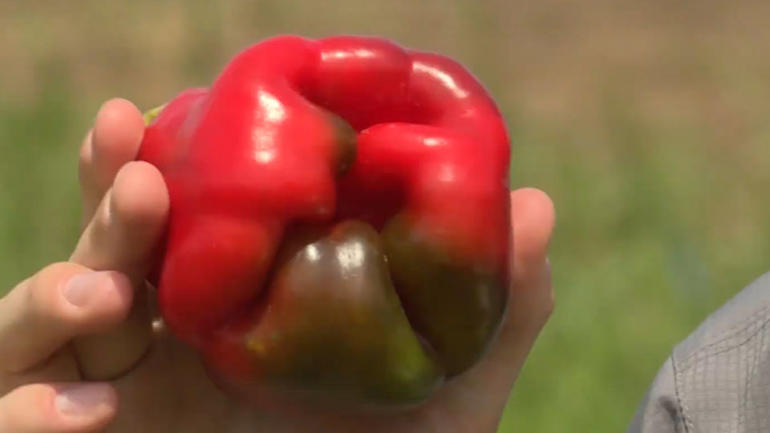The U.S. Department of Agriculture estimates that a third of the nation’s produce goes to waste. And that’s before it even gets to consumers.
But there are farmers and start-ups working to cut-back on food waste. CGTN’s Giles Gibson reported on a different approach to selling fruits and vegetables.
It was backbreaking work to weed tomato plants by hand under the baking sun. But Liz Whitehurst, the owner of Owl’s Nest Farm just outside the U.S. capital, was proud of the sometimes odd-shaped vegetables she grows on her 4-acre property
You probably wouldn’t expect to see an oddly shaped pepper in your local supermarket, but that’s because this farm operates on a completely different model from the wider food industry.
“For example, summer squash or zucchini. When you get them in the store they’re one specific shape, but when we come to the farmers’ market we bring little ones, we bring big ones, we bring medium ones,” Whithurst detailed. “And then people can make that choice and decide what size they want, versus throwing away a bunch of zucchini that are either too big or too small.”
Liz was competing with companies like Misfits and Imperfect Produce that deliver so-called “ugly” produce to your door.
The companies accused industrial farms of being too wasteful, throwing away produce that doesn’t meet strict cosmetic standards for supermarkets.
But experts at the U.S. Department of Agriculture say farming techniques are only part of the problem. “Farming is just highly variable and because of that quality varies, quantities vary, timing varies and it’s really difficult to match supply with demand,” Elise Dolan, a member of the agriculture department, explained to me. “Even the most efficient farming system is going to have some loss or waste. The question then is: what do we do with it.”
Part of the solution could be inside your fridge. Americans throw away around $29 billion of safe food every single year. U.S. authorities estimate that 20% of consumer food waste stems from simple confusion over date labels.
For small farmers like Liz, the solution starts at the local level. She valued her close relationship with the farm’s customers. But in a country of more than 300 million people, cutting food waste will require change at the national level.
 CGTN America
CGTN America
